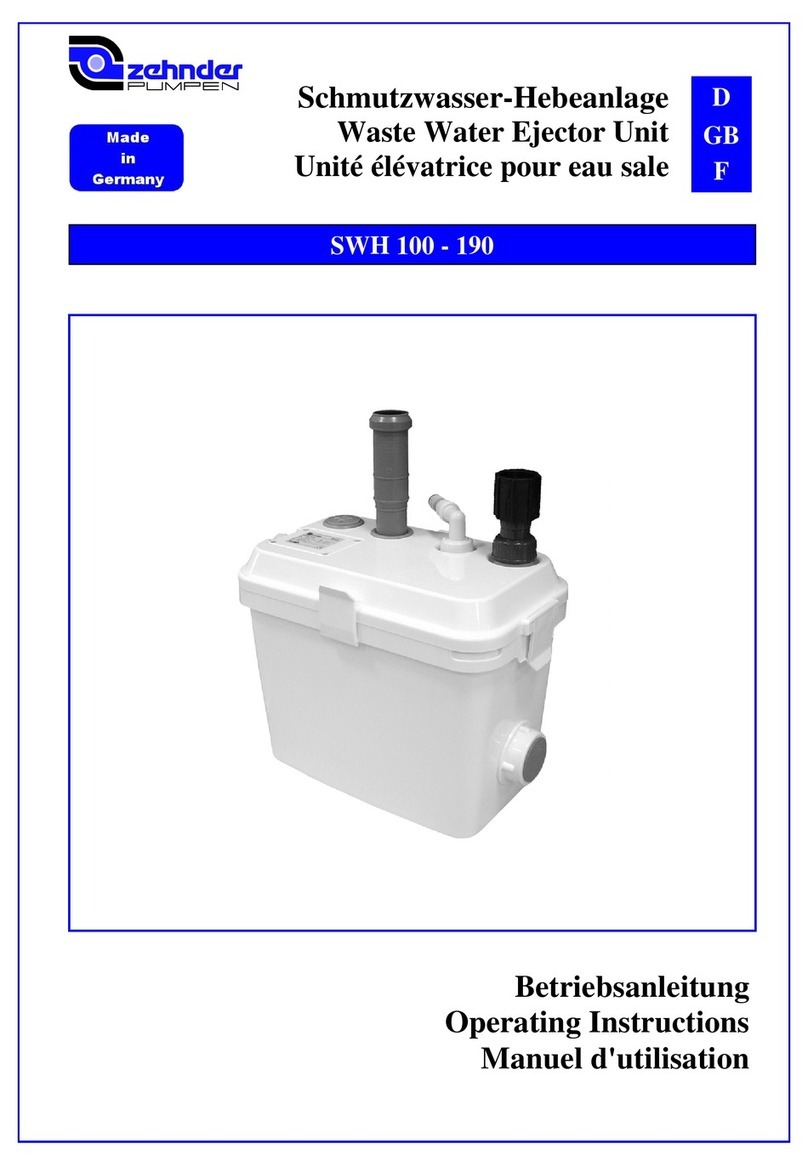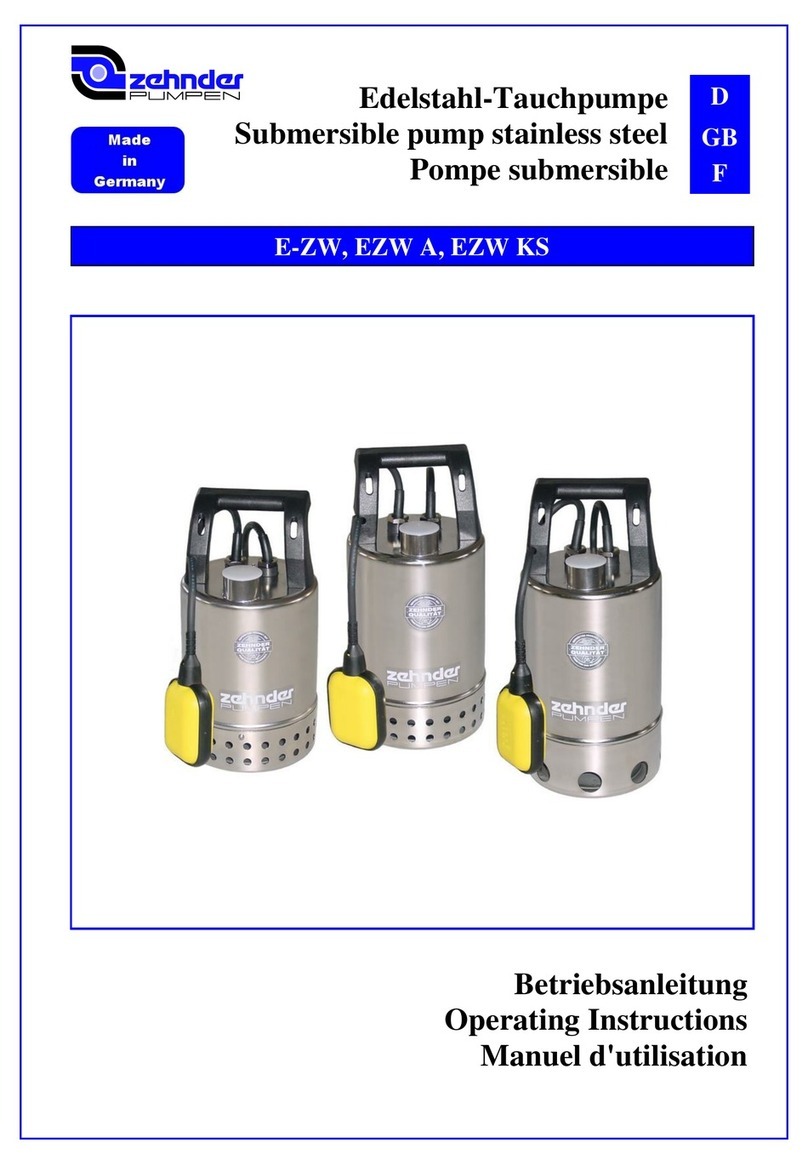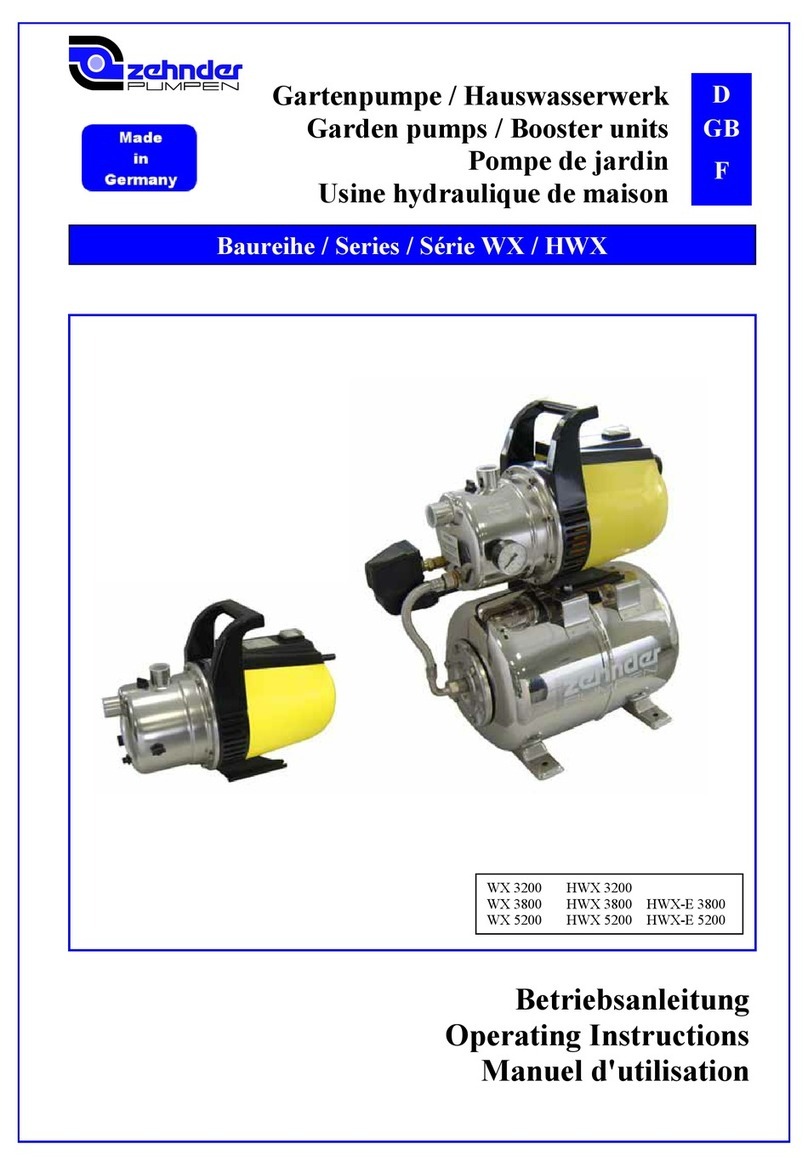Ventilation/cable duct
For ventilation/cable entry, 2 sleeves with lip seal DN 100 are existent. The vent pipe (sewer pipe DN
100) has to be inserted into the sleeve. In order to avoid unpleasant odours, we recommend laying
the vent pipes over the roof. The ductwork for cables (sewer pipe DN 100) has to be inserted into the
other sleeve and lead on to the switching device. The pipe has to be closed on the outlet inside the
switch cabinet or the building (e.g. by means of a blind cover with clamp fitting).
Electrical connection
The pump cable and the pneumatic hose have to be lead to the switching device via the ductwork for
cables.
For the electric connection of the pump, the operation manual and the connection diagram are valid.
ATTENTION The switch-off point and the follow-up time have to be set in such a way that the
pumping process is completed before the pump case resurfaces; at this point, though, the pilot tube
has to have completely resurfaced already. The pneumatic hose has to be lead to the switching
device in a constantly ascending manner and without loops. The maximum length should not exceed
20 m.
5.4 Filling of the trench
Before the trench is filled, the lip seal for the attachment piece has to be positioned inside the shaft,
and the attachment piece has to be inserted and adjusted to the ground level with the BEGU-manhole
cover.
ATTENTION Please note that the pressure test of the pressure pipe according to ATV A116 or
DIN 4279 Part 1-9 must not be carried out against the closed gate valve in the pump shaft. If all pipes
are connected and checked for tightness, the trench can be filled.
According to the regulations, backing sand or gravel sand has to be used to fill the trench.
Only use gravel sand of a grit size of up to 32 mm, as far as the excavated ground
does not correspond to the grit size group of 0- max 32 mm. Compact soil, debris,
rock or sharp-edged granulates are not to be used!
The filling material has to be filled in in layers of a thickness of max. 30 cm. Compress the filling
material evenly. In case of a lowering of the groundwater of the trench, the compression of the filling
material can be carried out by adding water while simultaneously operating the lowering system.
Use non-cohesive filling material!
In order to guarantee that the shaft is secured against uplift in clay soil as well, the shaft has to be
backfilled externally with sand, clay or concrete. In order to eliminate any possibility of a deformation
of the polyethylene shaft, the filling material must not be filled in unevenly!
Only after final completion of the shaft, including filling and compression of the trench, may the
possibly used groundwater lowering system be turned off.
The overlapping attachment of the attachment piece has to be backfilled and compressed properly.
In order to guarantee safe plant operation, the shaft has to be brought in horizontal position after the
filling.
If a manhole cover class D is used, please observe the notes found in the appendix at all
costs.































